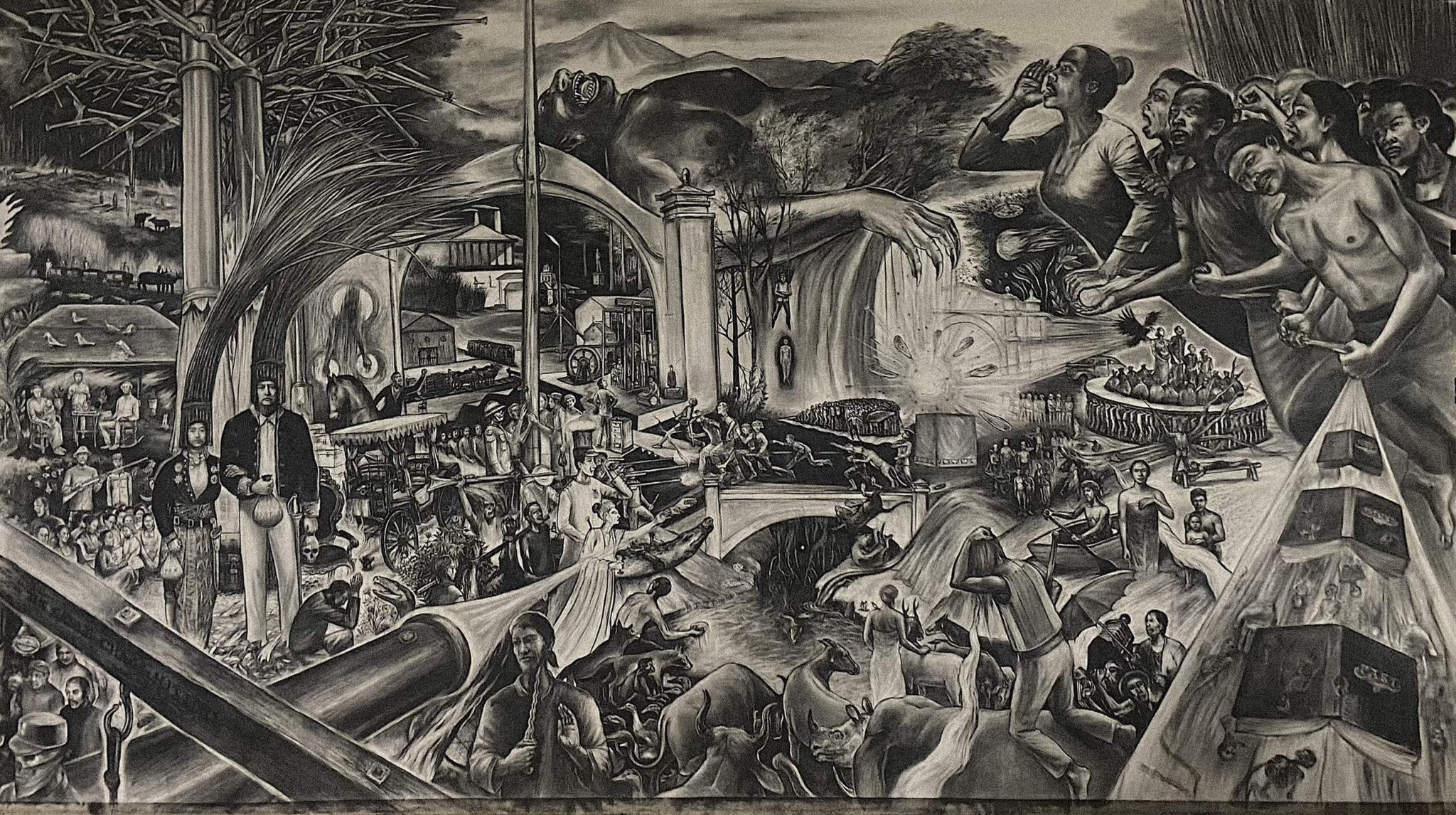Customised Postures, (De)colonising Gestures at Gajah Gallery, Singapore explores how our understanding of history in the region can be distorted
Customised Postures, (De)colonising Gestures showcases colonial photographs from the collection of Jasdeep Sandhu, director of Gajah Gallery, alongside contemporary art from Southeast Asia. The exhibition explores how colonial photography shaped representations of the region, and how contemporary practitioners adapt and challenge such tropes. The 52 archival photographs included here, split into several themes such as ‘In Search of (Traditional) Postures’, ‘Ordered Poses’ and ‘(Colonial) Environmental Portraits’, create a framework tracing traditional cultural poses alongside modern – and potentially inauthentic – postures that might have arisen from subjects being staged for the camera. Those subjects range from Indigenous people in traditional costume and Sizang chiefs in British Burma to Rangoon coolies, subjugated by the colonial gaze: many early photographs were produced to promote tourism and investment in colonies.
While photography is still generally perceived as a reflection of reality, Singaporean Robert Zhao Renhui highlights how such flawed understandings can distort our understanding of history. The series Singapore Crocodile, 1930s (2023) appears to depict the capture of Singapore’s last crocodile. Each photograph is similarly composed, featuring the body of a dead crocodile against a backdrop of lush, tropical foliage. Some feature male Western hunters, rifles in hand with a leg on top of the dead animal; others feature local assistants peering at the body from the sidelines. Convincing at first glance, only the wall text reveals that two images are archival, the other three produced with AI, reflecting the dangers of attributing the notion of truth to any single visual medium.
Filipino artist and activist Kiri Dalena’s video Felizardo, Taken in 1906 (2023) is an incisive investigation into the life of Cornelio Felizardo. Dalena first learned of Felizardo when she was an artist-in-residence at the Rautenstrauch-Joest Museum, where she encountered postmortem photographs of a mustachioed man with the caption ‘Felizardo, ladrone leader from Bacoor, Cavite’. The video traces Dalena’s journey to identifying the individual as Major General Cornelio Felizardo, who fought in the Caviteño resistance against the American occupation of The Philippines. This gap between the inaccurate information provided by the caption – which can be read as an extension of the museum’s misinformed perspective – and the historic reality of Felizardo’s identity poignantly speaks to how institutional forces continue to shape historical misrepresentation.

Foregrounding the gender imbalances in Javanese society, Abednego Trianto Kurniawan’s print series What Am I Going to Be When I Grow Up? Raden Ayoe Of Course (2015) contrasts portrait photographs of Javanese nobles with the writings of late-nineteenth-century Indonesian women’s rights activist Raden Ayu Kartini. Each framed photograph is double-sided: the portraits depict husbands standing confidently upright next to their seated wives, whose faces have been blanked out; the reverse of each features writings by Kartini, with the faces of these once-faceless wives collaged in.
Other highlights include Aris Prabawa’s visually arresting oil painting There is no sugar last forever and charcoal drawing Western Ruined Eastern, History Burned The Debt Return (both 2023), which poignantly point to the violent legacy of the Dutch administration in Java. Composed in soft sepia tones, There is no sugar… depicts Raden Tumenggung Tjondronegoro – a member of the Javanese gentry, who notably took no action as Prince Diponegoro was arrested by Dutch colonial rulers – standing in a body of water. On the other hand, Western Ruined Eastern...’s largescale composition depicts members of the Dutch administration shooting at anguished locals running into battle, while others, in boats and riding on the backs of animals, look on with despair. Suzann Victor’s A Patchwork Tells a Thousand Histories (2023) acts as a summation of the exhibition itself: a tapestry of postcards featuring Southeast Asian subjects from the 1920s and 1960s, overlaid with a screen of lenses that warps any viewer’s attempt to peer closer. To attempt to condense the effects of colonialism on an entire region’s visual history is an ambitious undertaking, but this expansive exhibition nevertheless unravels the numerous methods by which contemporary Southeast Asian artists grapple with and attempt to break free from the historic colonial perspectives that once defined the region.
Customised Postures, (De)colonising Gestures at Gajah Gallery, Singapore, 19 January – 18 February
